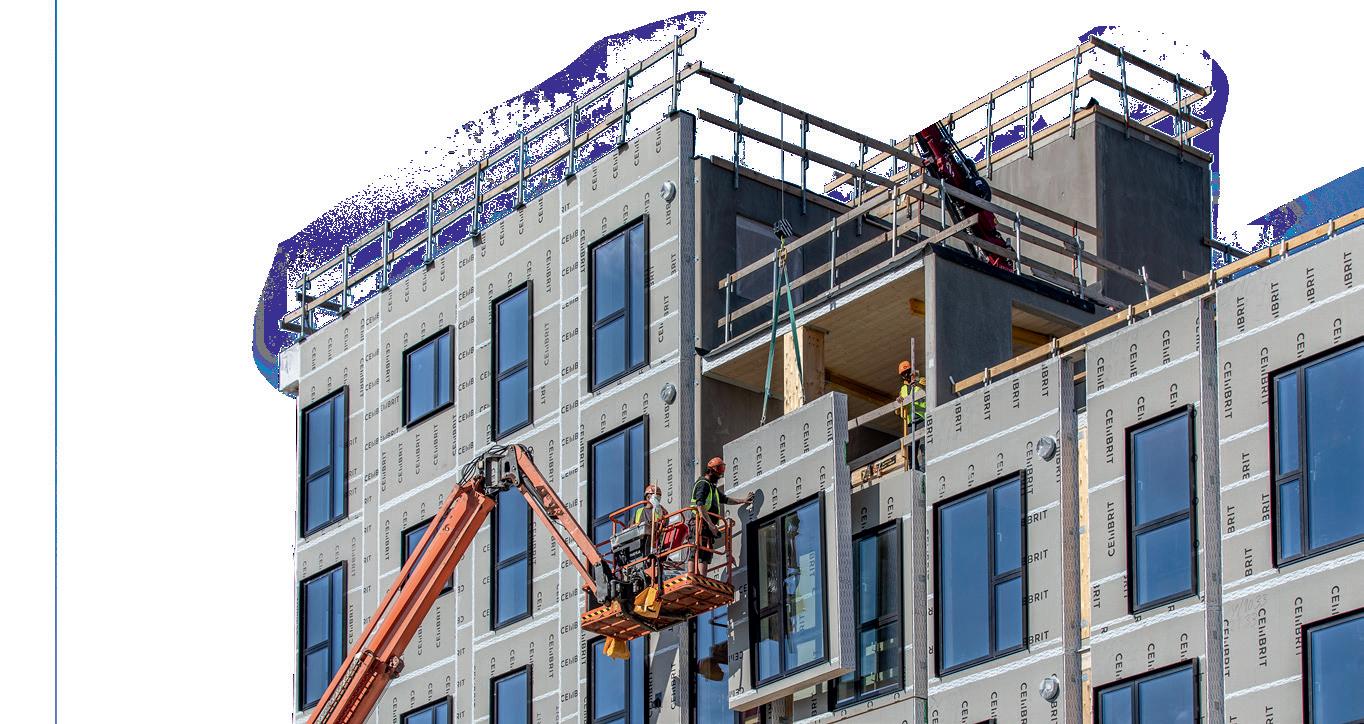
2 minute read
Respectful transformation of a Copenhagen landmark
A large modernisation of Copenhagen Central Station will create a more open and safe experience of the station. With this, one of Denmark’s most important transport hubs will be ready for the renewed attention given to trains and railways as more sustainable national and international transport modes.
For several years, Artelia has contributed to preserving the classic beauty of the capital’s Grand Old Lady, Copenhagen Central Station, and to ensuring that the station appears functional and attractive via ongoing renovation and modernisation projects. Now, the time has come for a significant change of the more than 100 years old and listed building.
Advertisement
On the inside, the shop pavilions will be transformed and modernised so travellers can stock up for their trips without going off course in the large hall. On the outside, the façade towards the street Reventlowsgade will be opened for shops, cafes and service functions to create flow and urban life in the otherwise overlooked street that connects the central station with the new metro station.
I consider this the crown jewel of our projects for DSB (Danish state railways). The transformation will take place in the presence of history as Copenhagen Central Station is the heart of DSB and a historic building. We will put great emphasis on conducting the work with full respect for the existing surroundings, says Division Director, Klaus Jørgensen.
Different considerations to balance
Since the building is listed, the façade opening must be planned in close contact with the Agency for Culture and Palaces. Even though significant changes will be made, it is important that they are fused together with the existing surroundings in a frictionless process to maintain the special spirit and appearance of the central station. Among other things, this requires special knowledge of traditions and peculiarities regarding brickwork, which is one of the characteristics of the building.
In connection with the modification of the shop pavilion, there are many considerations to balance. The pavilions must be flexible enough for varying use and an expected increase in number of passengers with the opening of the new metro lines. Practical needs such as cooling and ventilation installations must be taken into account, and it must be easy to carry on existing procedures for waste separation, delivery of goods, etc.
In that way, it is a typical assignment for Copenhagen Central Station with the constant balance between requirements related to listed buildings and to functionality, passengers’ expectations and needs, the wish to create a beautiful and image-bearing look, aligning with many difference stakeholders, special railway conditions, etc.
Many years of experience in one team
It is a very experienced team with a broad range of qualifications that is full-service consultant on the project which was put out to tender under a framework agreement with DSB. While Artelia is responsible for all engineering services, Gottlieb Paludan Architects is responsible for architecture, flow and interior design with Ole Drachmann from Drachmann Architects as an expert regarding matters related to listed and culture-historical conditions. Malus and AFRY are responsible for consultancy regarding railway safety in connection with the reconstructions. All team members have long-term experience with assignments for DSB and the central station – both at company level and as a team – and they are well aware of the special conditions to consider.
It is a really interesting project that fits well into Artelia’s portfolio of DSB projects. We have worked with Copenhagen Central Station for a long period, and we look forward to continuing the cooperation.

Jørgensen Division Director Zealand
Sustainability vision
A sustainability vision was prepared, which the project rests on throughout the process. The vision includes that the project – where it makes sense – complies with the requirements from the optional sustainability class (the Danish Civil Aviation and Railway Authority, May 2020).
Among other things, it will be relevant to consider choice of material and robustness to changes and wear and tear, well-functioning indoor climate with minimal energy consumption, low costs for operation and maintenance, etc.










